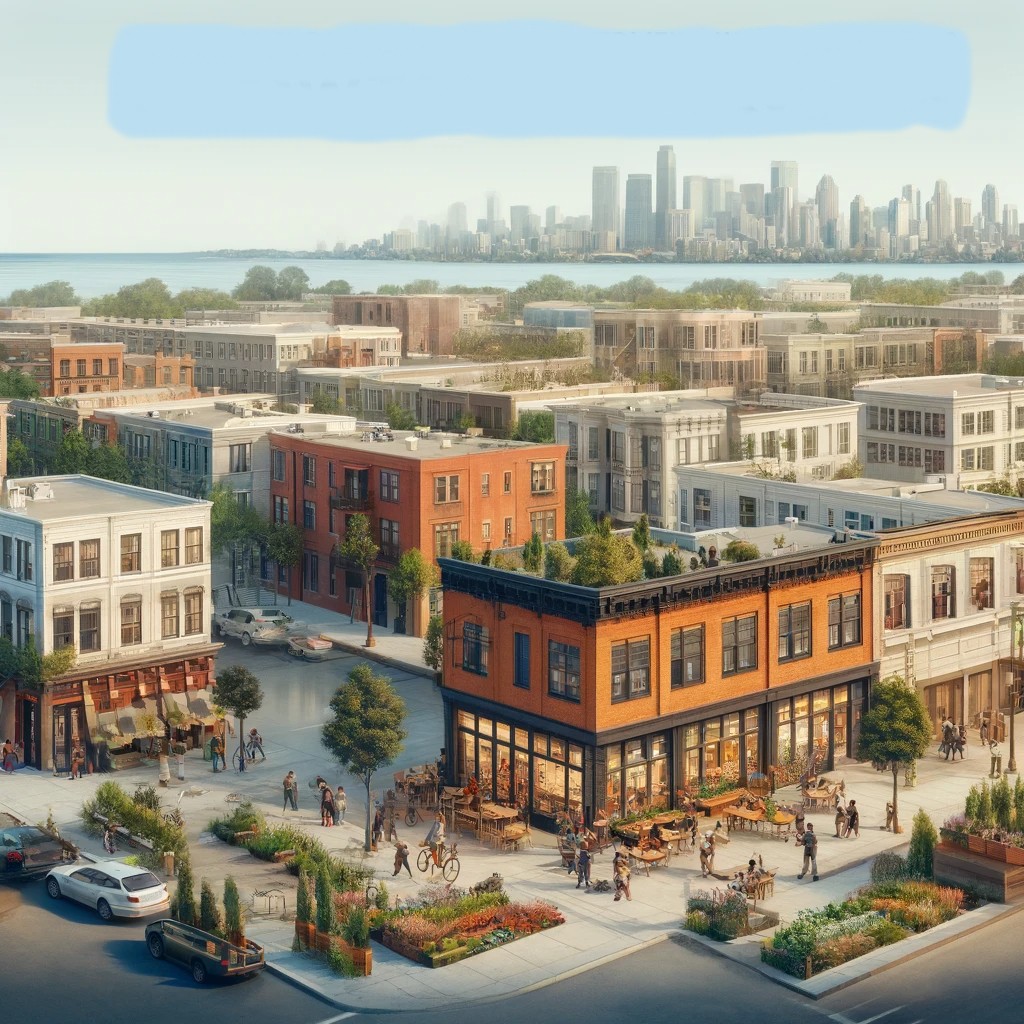Urban designs should help people, not push them away. When new housing, transit, and parks come to lower-income neighbourhoods, they can be very helpful. But without mechanisms to stop people from moving, those benefits can soon turn into increased rents, loss of neighbourhood culture, and the moving of long-time residents. This article talks about how designers, planners, and community leaders may purposefully design for fairness and gives specific, research-backed ways to stop people from being displaced.
What we mean by gentrification and displacement
Gentrification is when people with more money move into neighbourhoods with less money, which raises property values and makes people want to invest in the neighbourhood. When current residents, whether they rent or own, have to move because they can’t afford housing, are under pressure from their landlord, or lose access to key local services, this is called displacement. Urban design interventions and public investments can both cause beneficial change and detrimental displacement. The distinction is in the policies and instruments that go along with urban design.

Image source: homesight.org
Why Designers Must Care: Evidence and Risk
Studies demonstrate that public investments like transport lines, parks, or big cultural events can raise the value of land in the area. However, without protections, those gains often go to new investors instead of the people who already live there. The Urban Displacement Project’s literature assessment shows that public investment can lead to more people being displaced if policies that make housing more affordable aren’t put in place at the same time.
Eviction data complicates a simple story: some studies show that eviction rates are highest in neighbourhoods with consistently low incomes, while others show that gentrifying areas face different pressures (speculation, landlord buy-outs, rising property taxes) that change the way the local housing market works over time. Planners can take action early with tools that keep track of evictions and housing instability.

Brooklyn’s Pearl Street Plaza appears before and after redevelopment_©Ryan Russo/NYC DOT
Foundational Principles for Equity-Centered Design
Put Community Power At The Centre From The Start
Design approaches that put citizens in charge, like community land trusts (CLTs), neighbourhood advisory boards, or formal community benefits agreements, make it much more likely that improvements will help current residents. CLTs take land out of speculative markets and build housing that is always affordable by giving people long-term ground leases. The Urban Institute and Lincoln Institute both show how CLTs may keep housing affordable and give communities more power when they have the right resources.
Pair Amenities with Enforceable Housing Protections
Adding a park, a new station, or a better roadway without a plan on how to make it affordable will lead to people moving. Long-term affordability covenants, tenant protections (such as just-cause eviction and relocation aid), local acquisition funds, or developer obligations for permanently affordable units are all examples of legal protections that can be added to design projects. The APA’s “Planning for Equity” guide strongly suggests connecting physical investments to policies that protect people who are disadvantaged.
Use Land Tools to Limit Speculation
If you can, give land to community groups like CLTs, land banks, or cooperatives, or employ value-capture methods to pay for funds that help people who are about to be displaced. Land-based methods can make ownership or rental possibilities that are always cheap, not just temporary subsidies.
Concrete design + policy combinations that work
Transit-Oriented Upgrades with Affordability Guarantees
When planning around new transit, require or fund permanently affordable housing near stations and set aside land for CLTs. Research shows that investing in transit without making sure it’s affordable will speed up displacement. Combining the two gives people access to opportunities without making them too expensive.
Public Space Improvements Plus Acquisition/Preservation Funds
When new public amenities are built, use tiny linkage fees, value capture, or bonding to set up a local preservation fund. The fund can buy buildings that are in danger of being lost or help CLT buy buildings to make housing near new parks or municipal investments affordable. Evidence indicates that paired techniques mitigate the displacement effect of amenity enhancements.
CLTs Supported by Design and Capacity Grants
Give CLTs technical design help and flexible funding so they can build lovely, energy-efficient homes that fit in with the neighbourhood. When design funds and municipal policy backing are behind CLTs, they can grow beyond small projects and really help communities. Time and other policy guides say that CLTs have grown recently and that they can have a big impact when they have enough money.

Image source: illustrarch.com
Process Tactics: How To Practice Equity-Oriented Design
Early on, measure the danger of displacement by looking at rent trends, eviction filings, ownership change, and cultural indicators as part of the project’s feasibility and risk analysis. The Urban Displacement Project’s maps and models are a good example.
Make decisions in the community binding by turning the results of workshops into legally binding commitments (CBAs, covenants). Design is enough to convince people; policy makes it last.
Prefer small, context-sensitive changes over big demolitions that destroy naturally existent inexpensive housing. Where possible, focus on rehabilitation and “gentle density.”

Common Pitfalls and How to Avoid Them
Amenity blindness: When you think that new parks or plazas are neutral. Without protections, improvements to amenities can cause more people to move.
One-size-fits-all IZ assumptions: Inclusionary zoning can add affordable units, but its impacts on the ground are different. In some regions, it leads to fewer housing units being built or units that aren’t affordable enough unless IZ is well planned and supported by subsidies. Furman Centre analyses can teach you how to create programs in a more nuanced way.
Design without financial tools: To keep long-term equity in beautiful streetscapes, they need funding options like acquisition funds and CLT capitalisation.
Quick Checklist before You Break Ground
- Have you done a risk analysis for displacement? (rent, eviction, change of ownership)
- Is there a legally binding promise to provide affordable housing that is linked to the project? (covenant, CLT land transfer, or long-term subsidy)
- Are stabilisation plans in place to protect small enterprises and cultural institutions? (business rent help, keeping shopfronts in good shape)
- After implementation, is there a way for locals to file complaints or keep an eye on things? (mandated reporting and community oversight)
Conclusion: Design As A Lever For Shared Prosperity
Design can improve the liveability and resilience of places, but only if it is combined with policies that safeguard the people who currently live there. Put the authority in the hands of the community, use land-based instruments, and make sure that every investment in amenities is linked to enforceable measures to prevent people from being displaced. When design puts equity first, urban improvement becomes a way for everyone to have the same chance, not a reason for people to leave.
Reference
Balancing Growth & Equity: The Role of Urban Planning in Gentrification and City Development
For more content like this CLICK HERE





